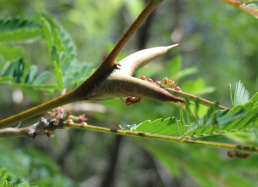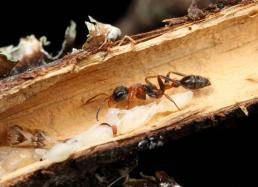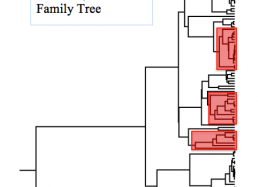Plant-eating Ants
Several species of ants in the genus Pseudomyrmex are "vegetarians," subsisting mostly on sugar-rich, plant-based diets. Some species live directly off the nectar provided by the plants themselves, while others live off of the honeydew secreted by parasites (such as aphids) that feed on the plant.
While a few of these ant species are actually parasites, too, which a plant's sugars without providing any protective benefits, other Pseudomyrmex species form a mutualistic relationship with the plant. In return for food and shelter, these ants defend their hosts by stinging any browsing animals, removing harmful fungi, and trimming back other competing plants encroaching into the host's space.
Bacterial Boost
Since all animals need complex proteins in order to reproduce and mature, Dr. Moreau's team is studying just how these various Pseudomyrmex ants supplement their high-carbohydrate diets. Bacteria seem to play a big part as a key supplement.
These little microbes somehow help ants digest, process, and enrich their limited diet, possibly by recycling waste nitrogen or fixing atmospheric nitrogen to increase the uptake of essential nutrients. Despite an inadequate source for complex proteins, the biological systems of the bacteria and the ants work together to produce vital amino acids that enable various species to survive and evolve.
Coevolution or Cooperation?
To better understand the relationship between plant-eating ants and their resident gut bacteria, Dr. Moreau's team is comparing the microbial community found in Pseudomyrmex ants that form mutualistic relationships with acacia, Triplaris, and Tachigali trees, with Pseudomyrmex that are instead parasites living on these same trees.
By sampling both groups of ants, the team hopes to learn if each species harbors its own lineage-specific bacteria, despite sharing a common environment. Or instead, do these related ant species all share the same bacteria, but in differing amounts based on their feeding strategies as parasites or mutualists? The team will then also map out the Pseudomyrmex family tree to visualize which lifestyles and traits evolved over time throughout the history of these ants.




